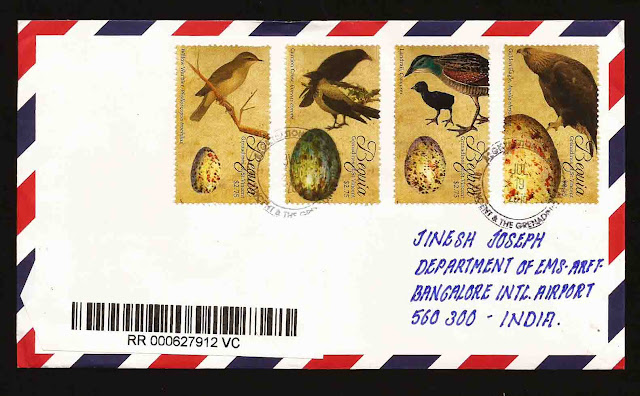Bequia is the
second-largest island in the Grenadines at 7 square miles (18 km2).
It is part of the country of Saint Vincent and the
Grenadines and is approximately 15 kilometres (9.3 mi) from the
nation's capital, Kingstown, on the main island, Saint Vincent.
Bequia means "island of the clouds" in the ancient Arawak. The island's name was also 'Becouya' as part of the
Grenadines. As a result of the Treaty of Utrecht, which brought an end to the War of Spanish Succession
and established peace between the Spanish and British Empires, Great Britain
obtained the lucrative monopoly over the Asiento slave trade. Runaway and shipwrecked slaves inhabited
the island of St. Vincent in the 17th century. According to an early account of
the French West Indies, which
considered Bequia as part of Grenada, Bequia was too inaccessible to
colonize and Caribs and Arawaks used the island for fishing and farming. A few
Portuguese and Dutch slave ships en route to Sint Eustatius from West Africa reportedly shipwrecked on the
Grenadine reefs.
Bequia was under French
control in the 18th century and during the Seven Years' War with England, the island was used by the
fleets of their Spanish and Dutch allies to take on supplies, while British
ships were banned. The 1763 Treaty of Paris
produced a significant re-alignment in the map of the Caribbean; St. Vincent
and the Grenadine islands, including Grenada, were given to the British in
exchange for Guadeloupe, Martinique and St. Lucia. The name Petit Martinique comes from this era, as does Petit Saint Vincent. In
1779 the French seized the island, despite the treaty, but were forced to
relinquish control to Britain again soon after.
Some historians believe that the famous
pirate Edward Teach had his base in Bequia. The opening shot of the
movie Blackbeard, Pirate of the Caribbean,
made by the BBC, displays a replica of his first ship off the coast of
Bequia in the St. Vincent passage. According to local legend, Saint Vincent and
the Grenadines was not only Teach's base, but also the place from which Sir Francis Drake planned his attacks on the Spanish admiralty in Don Blas de Lezo's Cartagena. Indeed, it is thought that Henry Morgan may also have anchored in Admiralty Bay, as it
was then the safest natural harbour in the Eastern Caribbean during hurricane
season. Bequia was used as a repair facility for ships. Beside Nelson's Dockyard on Antigua, and the Carlyle in Bridgetown, Barbados, there were
no other drydocks or shipyards in the area. Wooden shipbuilding and ship-repair
on Bequia was possible due to the presence of cedar trees on the island and a
sufficiently deep and sheltered harbour.
Bequia is one of the few places in the world
where limited whaling is still allowed. The International Whaling
Commission (IWC) classifies the island's hunt under the regulations
concerning aboriginal whaling.
Natives of Bequia are allowed to catch up to four humpback whales per year using only traditional hunting
methods of hand-thrown harpoons in small, open sailboats. The limit is rarely
met, with no catch some years. Bequia has a long tradition of whaling as well
as the building of whaling boats. There is a small whaling
museum on the island chronicling local whaling's history. A feature of the Port
Elizabeth waterfront is the Whale Boner Bar & Restaurant. This bar has an
entrance onto the beach consisting of an arch of two whale ribs, as well as
whale vertebrae mounted on the bar seats and a whale rib running the length of
the bar.
Registered Airmail cover from Bequia Island of St.Vincent. The cover posted on July 16, 2016 and I receive din my hands on September 20, 2016.



No comments:
Post a Comment
Note: only a member of this blog may post a comment.